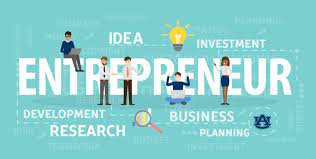The world talks about Silicon Valley, its spirit of entrepreneurship and how unmatched this environment is. An experience in Palo Alto’s Duveneck Elementary School brought this into sharp focus for me. Picking up on the longstanding nurture vs nature debate, what’s clear to me is that kids, in general, have an innate sense of business. When coupled with the constant exposure that they have to the Apple, Google and Facebook founding stories – and the personal stories at the dinner table – they are swirling around in a near perfect storm from a young age. While entrepreneurship is by no means the prerogative of folks from the Valley, this potent mix is likely to develop an unfair percentage of future entrepreneurs.
Read on to know what’s going on…
Duveneck takes all of its graduating 5th graders through the “BizWorld” progam – based on the work of Tim Drapers’s BizWorld Foundation. As BizWorld puts it, “BizWorld teaches children the basics of entrepreneurship, business, and finance in a hands-on manner, while emphasizing the importance of 21st century skills like collaboration, critical thinking, leadership, and creativity.”

I was fortunate to co-teach the program on two occasions when my kids were 5th graders at Duveneck. The first time was with Xenia Hammer and the next time was with Ben Galbraith – who, as I learned later, started working in the IT world at age 12! Over four sessions of 2-odd hours each, and some more time during class time to manufacture product, the kids learn how to start a company, take positions in the company (e.g., CEO; VP Design; VP, Manufacturing; VP, Marketing; etc), identify a promising product, determine which target market to focus on, design, price and manufacture a great product, raise capital over the life of a company, and keep books to understand profitability or lack thereof. They end up selling their products (friendship bracelets) to their target market (2nd graders, who are given a fixed number of BizDollars to buy bracelets) in a bazaar on day 3. To keep the competitive juices going, the financial results are used to assess a winner – though, its crystal clear that every kid comes out ahead.
First, some factual observations:
- Awareness – Over 75% of the kids in class knew what a startup was
- Exposure – Around 66% had had a parent play a significant role in a startup and most of them could explain what their dad or mom did for that company
- Understanding – Over 50% of them could explain what an option in the startup meant
In sharp contrast, I hadn’t heard of a startup till I got to Stanford as a grad student!
Now for the surprises:
- Kids have an intuitive business sense – when designing products (friendship bracelets), the kids realized that their target market (2nd graders) was going to be swayed by color and didn’t really understand the value of money
- Kids improvise – as the bazaar was winding down, the kids realized that the rules only cared about their sales volume. So, some teams hawked any remaining raw materials to boost revenue; and cajoled the 2nd graders to part with any unspent BizDollars
- Kids get manufacturing – while we briefly introduced the kids to the notion of mass production on a production line and more custom production in a job shop, some teams quickly figured out what the ideal product mix was. They crafted a colorful-enough bracelet (to drive price) that they could quickly manufacture (to drive volume). These teams most often beat the others — who went the opposite direction and designed and manufactured exquisite bracelets in lower volume; despite pricing high, they didn’t realize the revenue repercussions till it was too late.
And, finally, for the true surprises:
- Compete vs collaborate – as the competition got going, the kids started realizing that some teams were ahead of the others. From this, emerged the idea of “merging to better compete with the leader.” Which triggered a discussion on whether this was fair or not, whom to merge with, and what a merger meant
- Raise funds by selling stock vs taking a loan – the kids, when they get into the manufacturing section, need to raise funds to pay for raw materials and salaries. They have two choices – sell stock or take a loan. And, they need to explain their decision to the VC or the banker. What surprised me was the recognition/belief among the ones who went to the bank that they could repay their debts and increase the company’s value.
When I was in 5th grade, I worried about ensuring that I had enough marbles for my lunchtime game with my classmates – not about starting my own company. I certainly didn’t have my first offer to found a company – as my 9th grader recently had!
If you are the parent of a 5th grader, and your school doesn’t offer this to your kids, I HIGHLY encourage you to get the school to run BizWorld. The beauty is that the model can be executed anywhere in the world!
Take pictures and let me know what you learn! My only ask is that the kids give me a chance to invest in their companies!!










